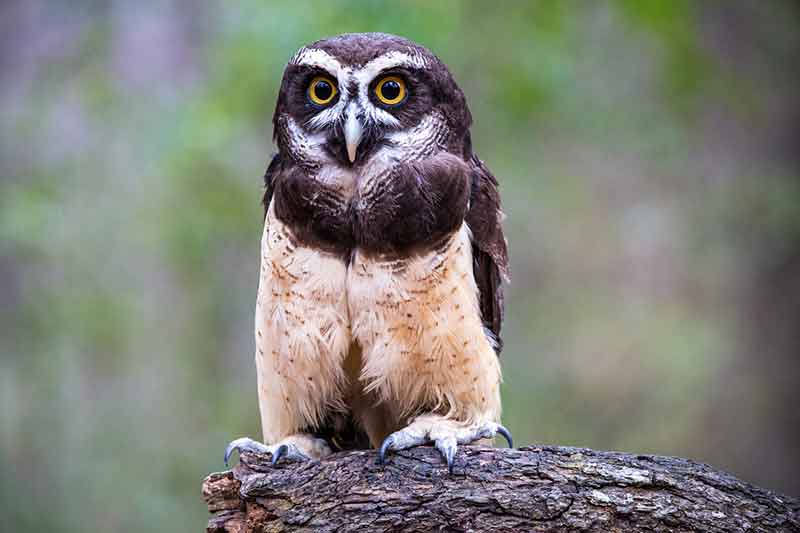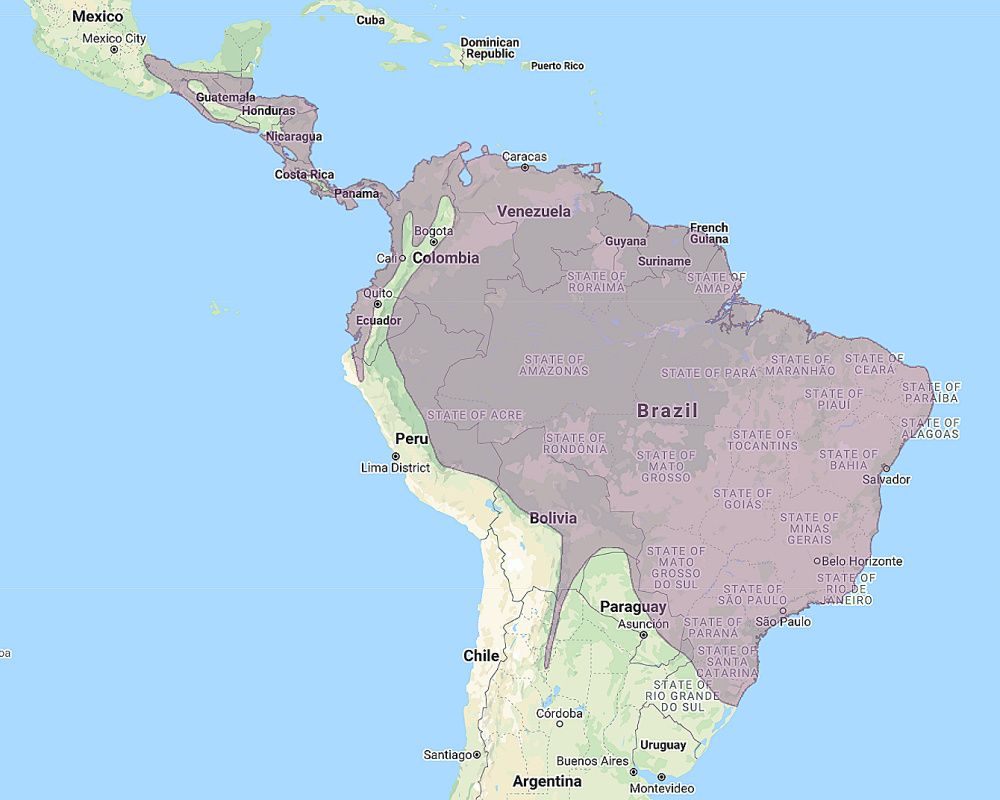The Spectacled Owl
The Spectacled Owl (pulsatrix perspicillata) is a mostly nocturnal and pretty unsociable species. They lay eggs during the dry season (mid November to April) and nest in tree hollows. These clutches are of 1-2 eggs, and often only one chick survives to adulthood. This is because the chicks leave the nest long before they can fly and fledge for about a year. Although the parents care for their young that's left the nest, they can't prevent predators every time, as well as the general dangers of the chicks not being able to fly.
Spectacled Owls eat small mammals, birds up to the size of jays, bats, crabs, insects, and spiders. When hunting, they drop with a swift pounce and grab their prey from the foliage. They tend to be the most vocal on calm, moonlit nights. Duets of males and females can often be heard in the trees.
Spectacled Owls are found anywhere from the southern end of Mexico to most of northern South America (not including the Andes). Though they mostly live in Central and South America, Spectacled Owls are considered North American Owls because they are consistently found in southern Mexico. Although they prefer dense, mature rainforests, Spectacled Owls also have been noted to live in dry forests, savannahs with trees, and plantations. They can be found anywhere in northern South America besides where the Andes are. Though the Amazon is disappearing, Spectacled Owl numbers are still of least concern.
Fun Facts:
- Spectacled owls are very efficient hunters
- in Brazil, they're locally called "knocking owls" because of their iconic knocking-sounding call
- Females have a hawk-like scream that sounds like a steam whistle

